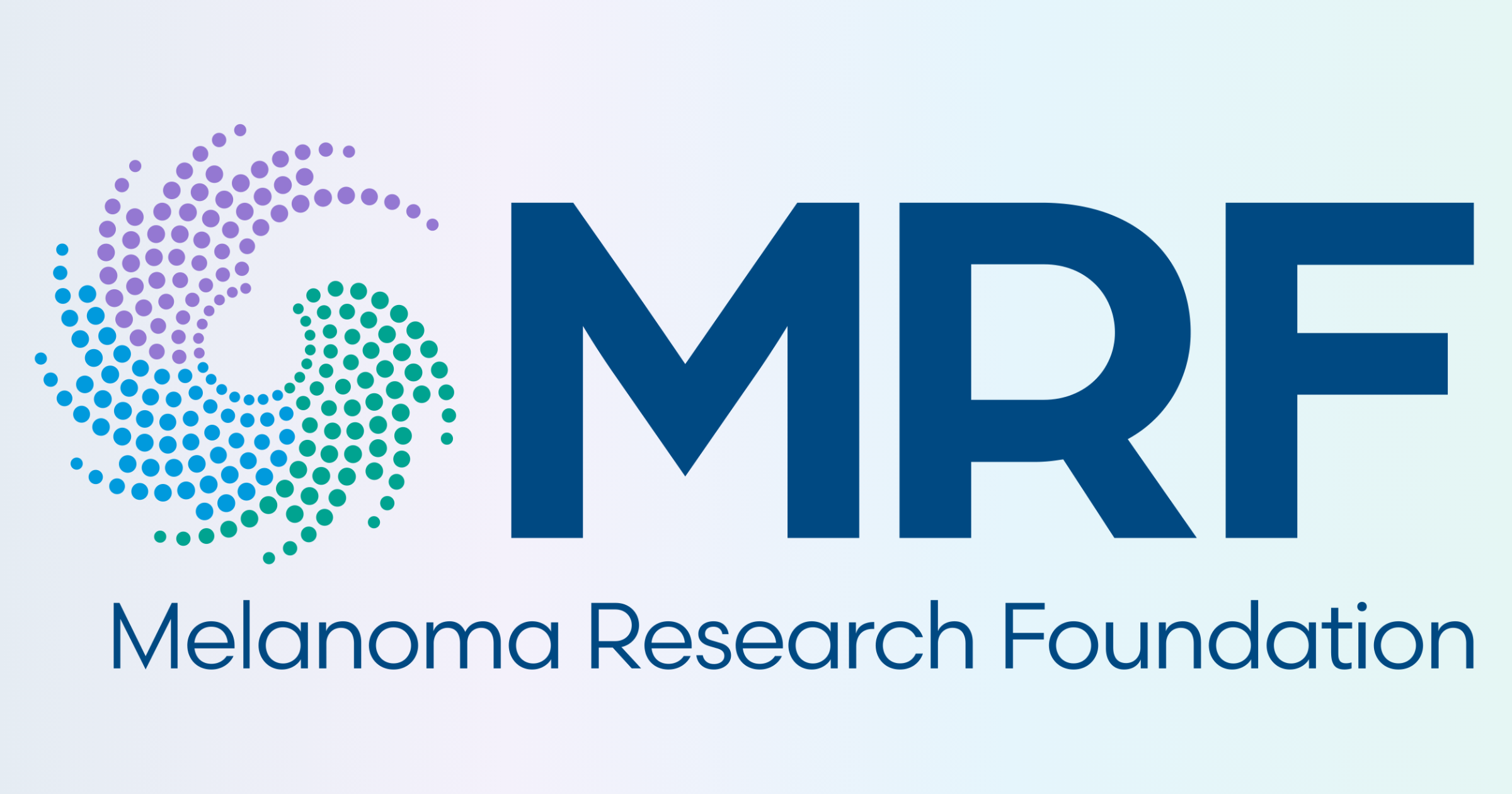2025 ASCO Annual Meeting Recap

Guest Blog SUBMITTED BY
Bonnie Teng, PhD, MRF’s Chief Scientific Officer
The 2025 American Society of Clinical Oncology (ASCO) Annual Meeting was held from May 30 to June 3. This world’s largest clinical cancer research conference brought together over 40,000 oncology professionals from more than 100 countries. With the theme “Driving Knowledge to Action: Building a Better Future,” the meeting showcased the latest breakthroughs in cancer research including melanoma. Outlined below are some highlights presented at this year’s meeting in melanoma research including the rare melanoma subtypes.
IL-6 Blockade May Reduce Toxicity of Combination Immunotherapy in Advanced Melanoma
Immune checkpoint inhibitors (immunotherapy drugs) have revolutionized the treatment of advanced melanoma. Combination immune checkpoint inhibitor (ICI) [3] regimens showed higher response rates compared with single agent anti-PD-1 treatment. Anti-PD-1 treatment is a type of ICI therapy. However, combination therapy increases the risk of serious immune-related adverse events (irAEs). New research is focusing on finding effective treatments with lower irAEs. Interleukin-6 (IL-6), a protein that regulates inflammation, is a promising target for reducing irAEs. MRFBC clinician scientist Janice Mehnert of NYU presented data from a Phase II clinical trial with an IL-6 receptor inhibitor (sarilumab) added to the combination of nivolumab, relatlimab, and ipilimumab. In this study, advanced stage III/IV melanoma patients who received the four-drug regimen showed a promising response rate with a lower rate of serious irAEs. These early results suggest that IL-6 receptor inhibition may make powerful immunotherapy regimens safer. A larger randomized study is ongoing to confirm these findings.
Treatment Sequence is key in BRAF-Mutant Melanoma
BRAF is one of the most frequently mutated oncogenes [1] in melanoma. BRAF-mutant melanoma can be treated using targeted therapy combined with immunotherapy [2] such as nivolumab and ipilimumab. The sequence of the treatment can affect the results. MRF Scientific Advisory Committee (SAC) co-chair Dr. Michael Atkins, MD of Georgetown Lombardi Comprehensive Cancer Center presented data from a phase III clinical trial (DREAMseq) demonstrating that BRAFV600-mutant stage III-IV melanoma patients had better long-term survival when treated with immunotherapies (nivolumab, ipilimumab) first, followed by targeted therapy (dabrafenib and trametinib). The data from this study showed the importance of the sequence of treatments in BRAF-mutant metastatic melanoma.
Neoadjuvant Immunotherapy Shows Promise in Stage III Melanoma
A new immunotherapy approach for stage III melanoma was presented by Melanoma Research Foundation Breakthrough Consortium (MRFBC) clinician researcher, Dr. Tina Heiken, MD of Mayo Clinic. Recent studies show that immunotherapy given before surgery to remove the melanoma (neoadjuvant therapy) improves patient outcomes. The NeoACTIVATE Arm C is a phase 2 clinical trial that tested the neoadjuvant combination of two immunotherapy drugs atezolizumab and tiragolumab which targets TIGIT immune checkpoint. This approach was effective in eradicating melanoma from the lymph nodes of a large number of patients, associated with favorable survival outcomes, and had fewer serious toxic effects from the treatment. Future work will be focused on identifying biomarkers, or biological signs, to predict which patients will benefit the most from this treatment and have a lower risk of long-term side effects.
AI-Detected Immune Cells May Predict Response to Immunotherapy in Melanoma
The 2025 recipient of the ASCO Conquer Cancer Foundation Merit Award – Endowed award sponsored by the MRF, Dr. Mark Schuiveling, MD (PhD candidate) of University Medical Center Utrecht, Netherlands, presented his research “AI-detected tumor-infiltrating lymphocytes and response to PD-1 based treatment in advanced melanoma”. Dr. Schuiveling explained “Our study shows that having more immune cells in diagnostic metastatic melanoma biopsies, as detected by AI, may help predict response to immune checkpoint inhibition. While these results are promising, future research will focus on improving the accuracy of this prediction, with the ultimate goal of identifying patients most likely to benefit from immune checkpoint inhibition.”
Animated Guides Improve Melanoma Patient Understanding and Decision-Making
In the Melanoma/Skin Cancer poster session, “Animated patient’s guide to melanoma: Assessing patient understanding, shared decision-making, and health outcomes” was presented by MRF CEO Kyleigh Lipira, MBA and MRF Director of Education and Patient Engagement Miriam Kadosh, MSW, LCSW and David Searle of Mechanisms in Medicine. Their data showed that animated formats of learning provide effective translational learning that could be utilized in other oncology settings to benefit patient outcomes. Please visit [Animated Patient Videos – Melanoma Research Foundation] to view the Animated Patient Video Series Modules.
First-in-Human Trial of DYP688 Shows Promise in Uveal Melanoma
Uveal melanoma, a rare type of melanoma found in the eye, accounts for approximately 5% of all melanoma diagnoses. GNAQ/11 mutations are observed in approximately 95% of uveal melanomas. PMEL17(GP100) is highly expressed in melanoma cells, including uveal subtypes. This first-in-human Phase I study evaluated the safety, tolerability and preliminary efficacy of DYP688. DYP688 works by targeting GP100 to deliver a QNAQ/11 inhibitor (SDZ475). By targeting PMEL17, the inhibitor is treating cancer cells and minimizing damage to healthy cells. In patients with metastatic uveal melanoma and other melanomas with GNAQ/11 mutations, DYP688 demonstrated a favorable safety profile and showed encouraging preliminary antitumor activity. Early results support the tolerability and potential clinical benefit of DYP688. Ongoing studies include dose optimization and analysis of mutational profiles from tissue and circulating tumor DNA.
Triplet Neoadjuvant Therapy Shows Promise for Acral Melanoma
Acral melanoma, is a rare and aggressive type of melanoma that forms on the palms, soles of the feet or under fingernails or toenails. Acral melanoma, also called acral lentiginous melanoma, is more common in Asian and African populations. Phase II CAP 03-NEO Clinical Trial showed promising neoadjuvant treatment results for patients with resectable stage II/III acral melanoma. Dr. Lili Mao from Peking University Cancer Hospital presented the efficacy and safety of the triplet neoadjuvant regimen of combining PD-1 inhibitor (camrelizumab), VEGFR2 inhibitor (apatinib) and a chemotherapy agent (temozolomide). The results showed the potential of triplet neoadjuvant treatment particularly in Stage III disease.
Novel compound IBI363 Shows Promise in Treatment-Resistant Mucosal and Acral Melanoma
Mucosal melanoma is another rare type of aggressive melanoma that develops in mucous membranes (the moist inner lining of the body). Mucosal and acral melanoma do not respond well to immunotherapy. Dr. Jun Guo, MD from Peking University Cancer Hospital showed promising efficacy and well-tolerated safety results of a new compound, IBI363, the first-in-class PD-1/IL-2 alpha-bias bispecific antibody fusion protein (targeting PD-1 and IL2) in advanced acral and mucosal melanoma patients previously treated with immunotherapy.
With melanoma incidence on the rise, better diagnosis and treatment is critically needed. While the current findings highlight promising advancements in treatment efficacy, further research is essential to optimize therapeutic strategies. Specifically, more studies are needed to determine the most effective sequence and duration of treatments, explore beneficial drug combinations and develop new treatments with minimal toxicity. Additionally, the identification of predictive biomarkers is critical to better stratify patients and personalize therapy.
1. Oncogene: Gene that when mutated can change how cells grow and divide. Specific oncogenes can drive certain cancers. For example, BRAF mutation in melanoma. Targeted therapy treat cancer by targeting oncogenes.
2. Immunotherapy: A type of cancer treatment that uses the body’s own immune system to fight cancer
3. Immune checkpoint inhibitor: A type of drug used in immunotherapy. It works by blocking proteins (called immune checkpoints). By inhibiting these proteins, immune checkpoint inhibitors (ICIs) help the immune system recognize and attack cancer cells more effectively.



